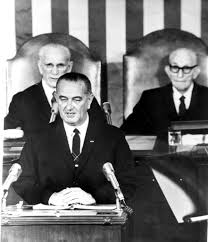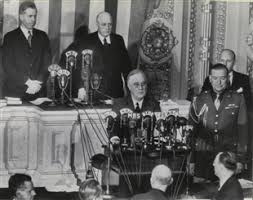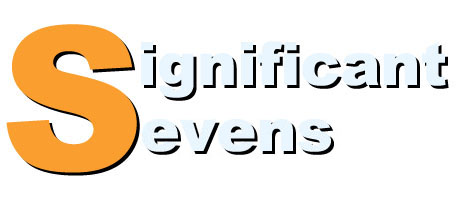The State of the Union Address: a History
The first President, George Washington, delivered the first State of the Union address on Jan. 8, 1790, in New York City, which was then the provisional capital of the relatively new United States of America. Washington spoke his address on that day; he made a habit of delivering his annual address orally, as did his successor, John Adams. When Thomas Jefferson became President, he delivered his State of the Union address in writing because he thought that the oral address delivered to both houses of Congress was too much like a king talking down to his subjects. The delivery of an annual written message, read by a clerk to Congress, became the norm and was changed only in 1913, when then-President Woodrow Wilson delivered an oral State of the Union address. Actually, the term "State of the Union," although provided in the Constitution, was not used in reference to the President's annual joint-session-of-Congress address until 1934, when then-President Franklin D. Roosevelt used in his address; further, the address was not commonly referred to as such until 1947. The return to an oral State of the Union did not hold to form every year. Wilson himself turned in written addresses in 1919 and 1920, as did Calvin Coolidge in 1924–1928, Herbert Hoover in 1929–1932, Harry Truman in 1946 and 1953, Dwight D. Eisenhower in 1956 and 1961, Richard Nixon in 1972, and Jimmy Carter in 1981. The State of the Union address has been traditionally given to Congress and other members of the Government. (See here for more particulars about how the address works.) 
The delivery of the State of the Union as a nighttime event is common in the modern era, but the tradition had been for a daytime address as late as 1936. In that year, then-President Franklin D. Roosevelt gave his address at night. Subsequent Presidents varied the practice. In 1965, then-President Lyndon B. Johnson delivered his State of the Union address at night and the address was televised live, in primetime. (Harry S. Truman, in 1947, had been the first President to have his State of the Union address televised.) Johnson's announcement of his intention to delivered a primetime televised address prompted members of the Republican Party to announce that they would give a televised response to what the President said. (Johnson was a member of the Democratic Party.) An other-party response address has been the norm since then.
The President usually packs the State of the Union address with a wish list of legislative priorities. Some addresses through history have contained momentous elements:
The State of the Union address has varied in length throughout its history. The very first such address, given by Washington, was 1,089. The longest spoken address was in 1995, when then-President Bill Clinton spoke 9,190 words. The longest written State of the Union address was turned in by then-President Harry S. Truman in 1946: more than 25,000 words. |
|
Social Studies for Kids
copyright 2002–2024
David White






